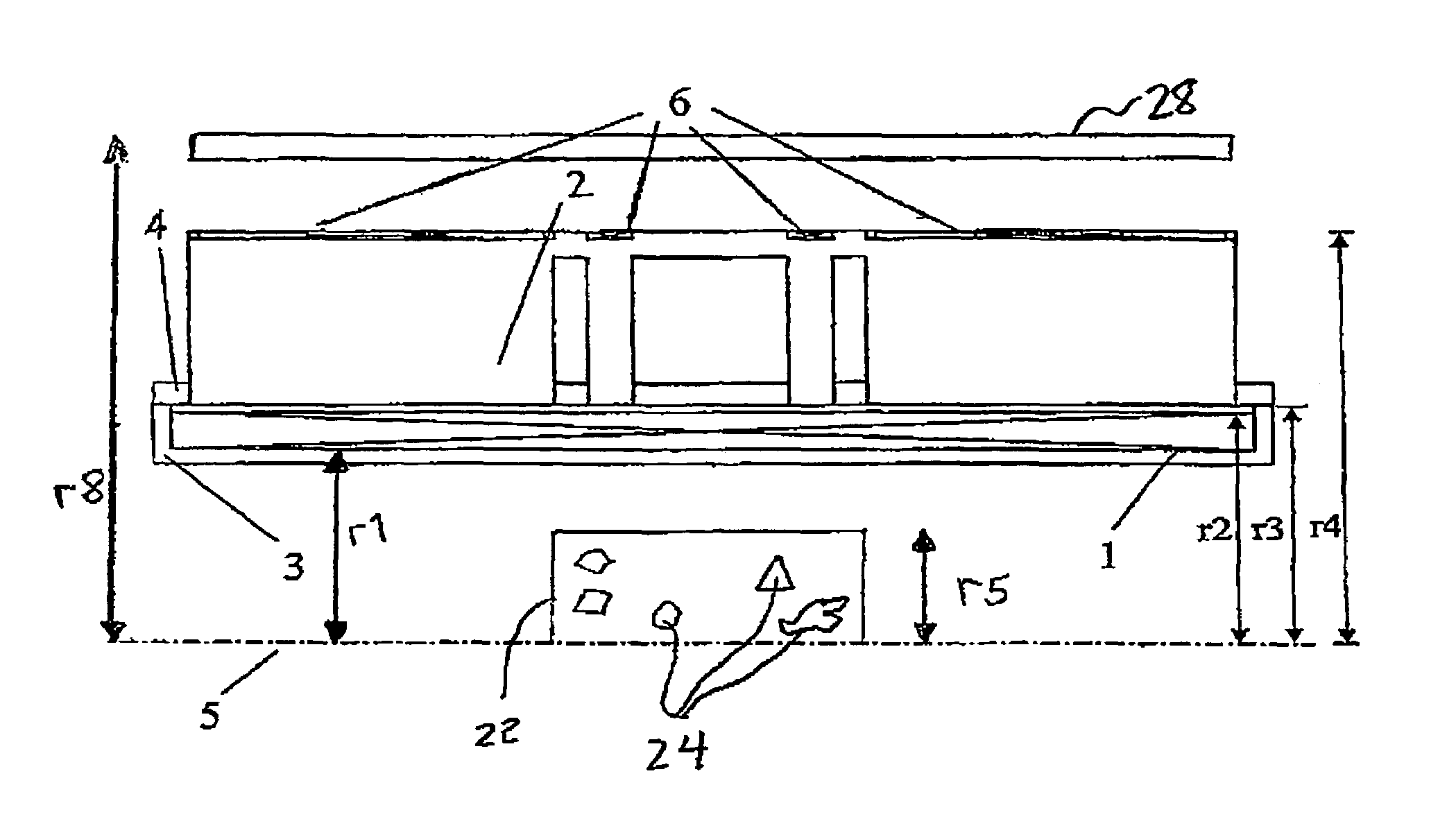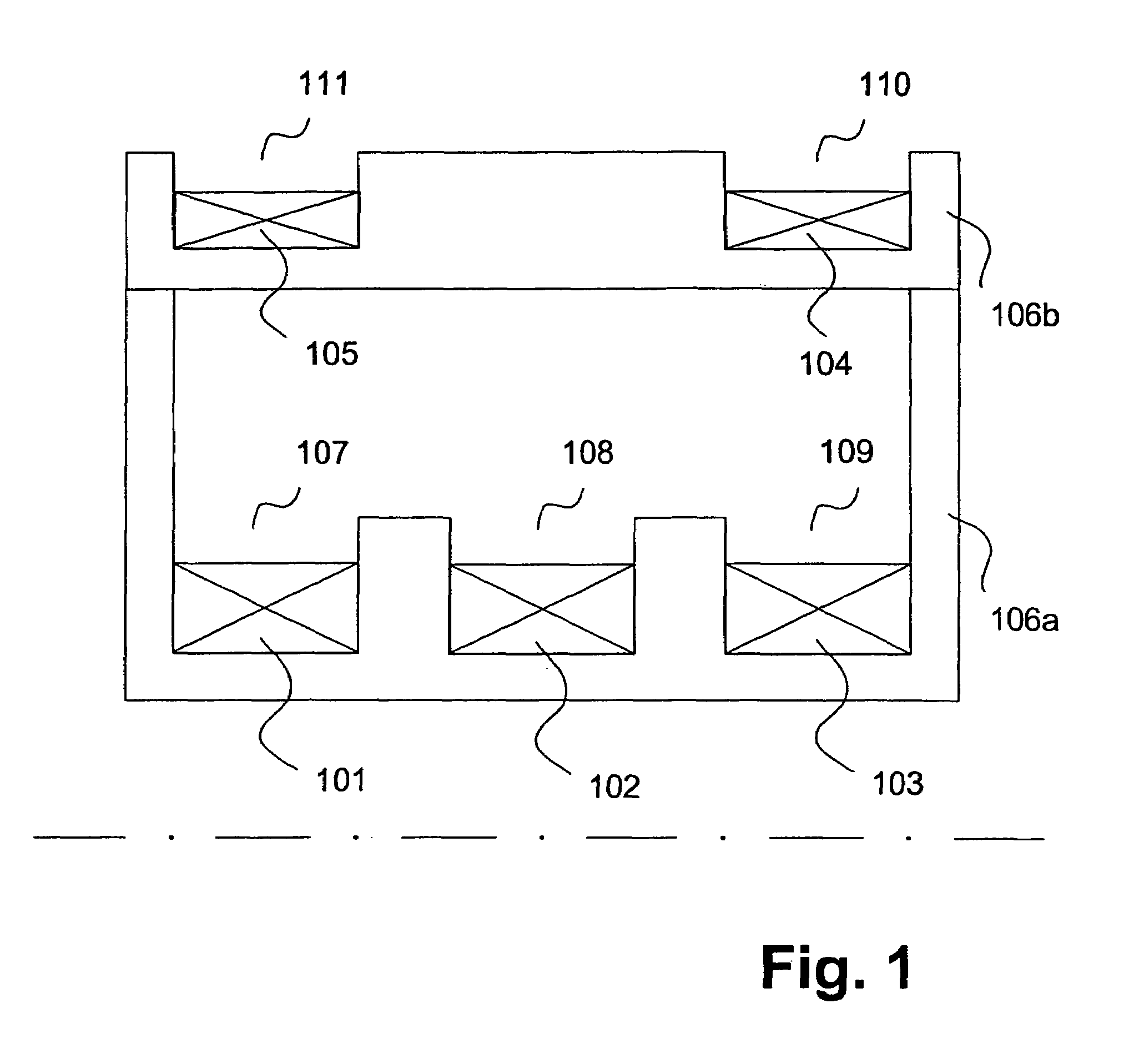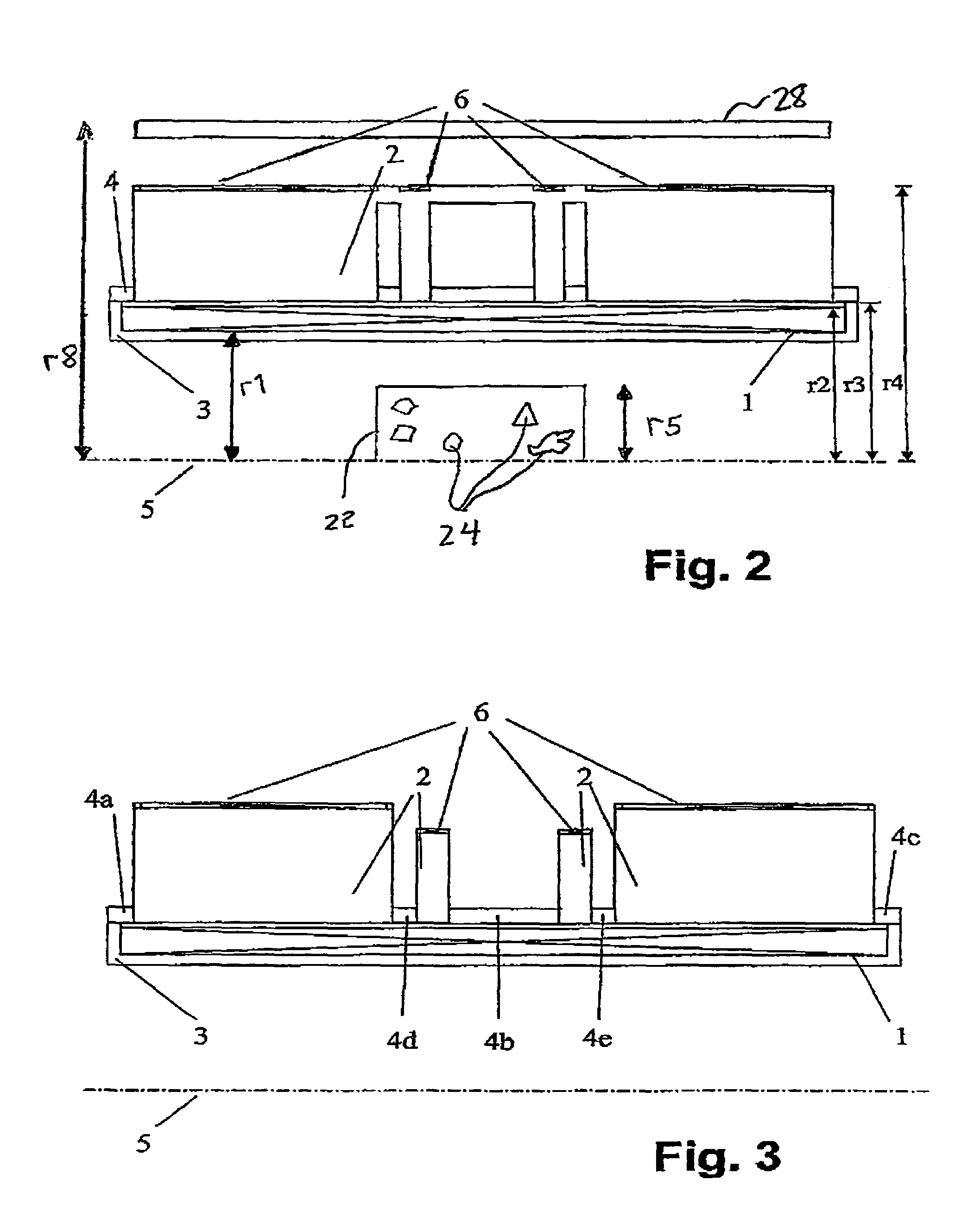Hybrid magnet configuration
a hybrid magnet and configuration technology, applied in the direction of magnetic materials, cores/yokes, reradiation, etc., can solve the problems of magnet coil damage, magnet coil overheating, and inability to produce homogenous magnetic, etc., to achieve the effect of minimizing the magnetic fringe field, improving the suppression of fringe field, and facilitating individual adjustment of magnetic stray field
- Summary
- Abstract
- Description
- Claims
- Application Information
AI Technical Summary
Benefits of technology
Problems solved by technology
Method used
Image
Examples
Embodiment Construction
[0056]FIG. 1 shows the principal components of a conventional rotationally symmetric magnet coil configuration. Winding chambers 107, 108, 109, 110, and 111 are fashioned into a two-part support body 106a, 106b. First magnet windings 101, 102, 103 and second magnet windings 104, 105, each made from superconducting coil wire, are wound in these winding chambers. First magnet windings 101, 102, 103 serve primarily to produce a strong magnetic field in an investigational volume which surrounds, e.g. in a magnetic coil configuration for a magnetic resonance apparatus, the symmetry center of the magnet coil configuration. The second magnet windings 104, 105 primarily serve for minimizing the fringe magnetic field in an outer region of the magnet coil arrangement by means of a feedback of the magnetic flux (active shielding). The direction of the electrical current in the second magnet windings 104, 105 is therefore opposite to the direction of the electrical current in the first magnet w...
PUM
 Login to View More
Login to View More Abstract
Description
Claims
Application Information
 Login to View More
Login to View More - R&D
- Intellectual Property
- Life Sciences
- Materials
- Tech Scout
- Unparalleled Data Quality
- Higher Quality Content
- 60% Fewer Hallucinations
Browse by: Latest US Patents, China's latest patents, Technical Efficacy Thesaurus, Application Domain, Technology Topic, Popular Technical Reports.
© 2025 PatSnap. All rights reserved.Legal|Privacy policy|Modern Slavery Act Transparency Statement|Sitemap|About US| Contact US: help@patsnap.com



